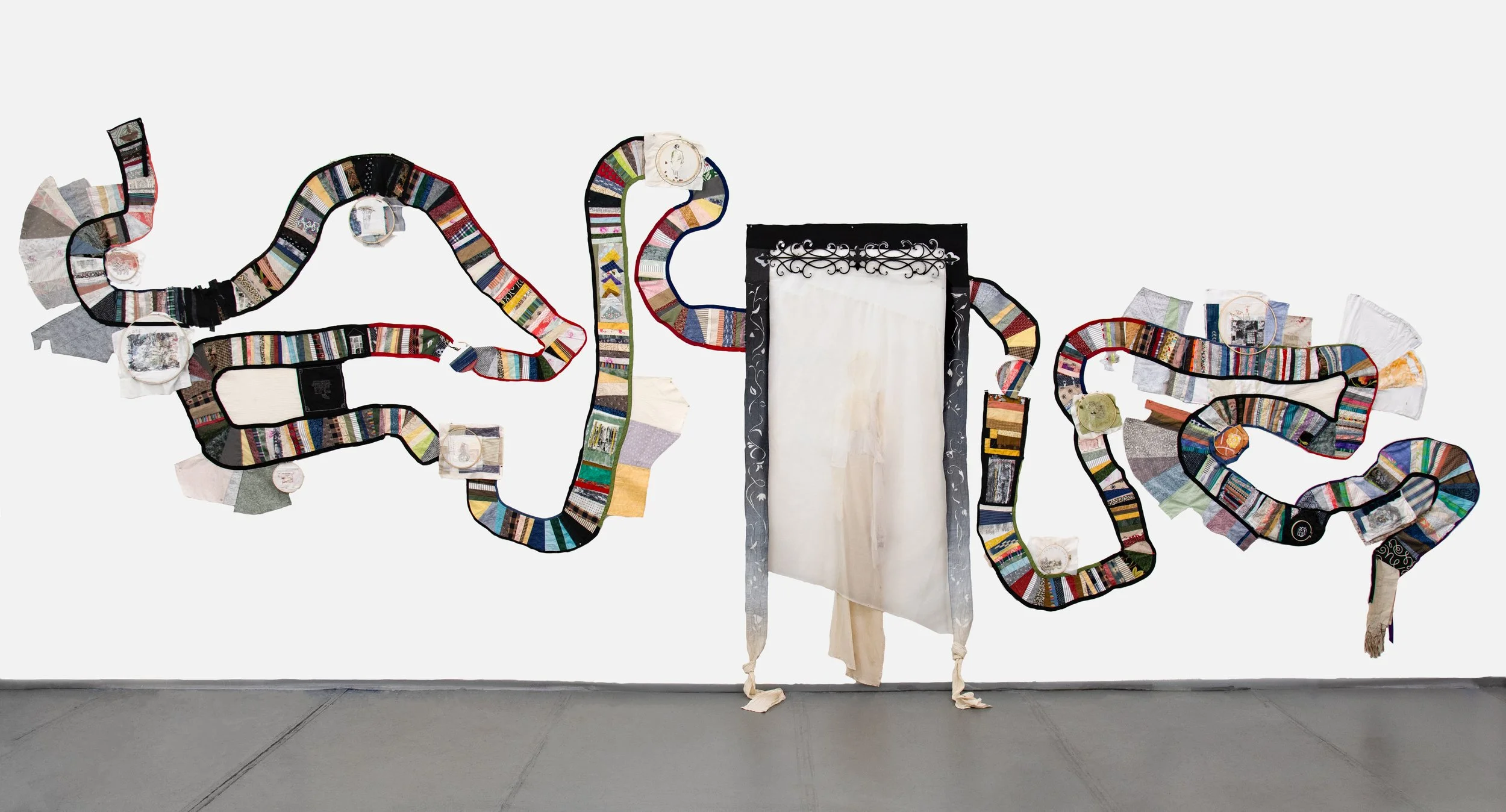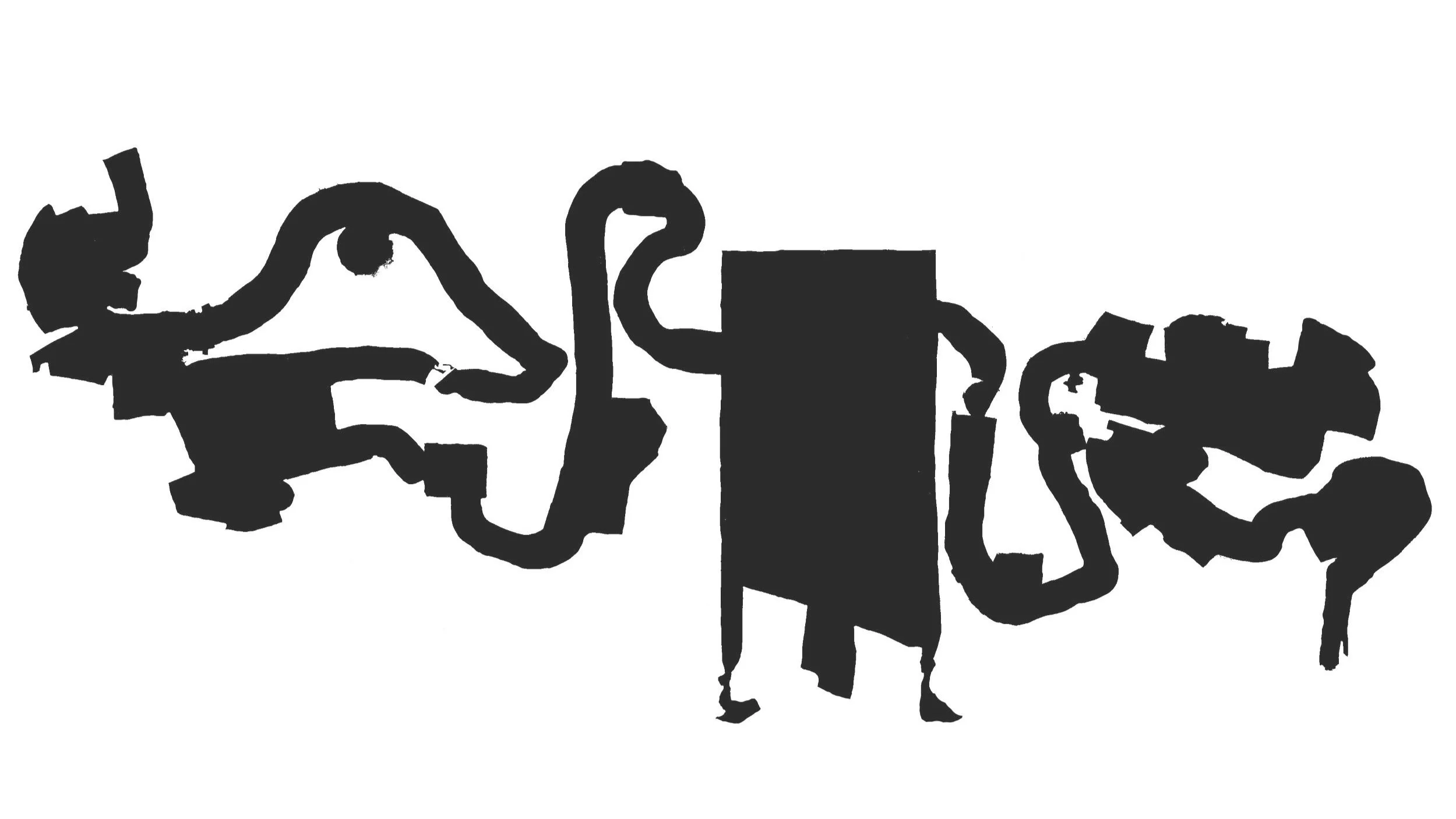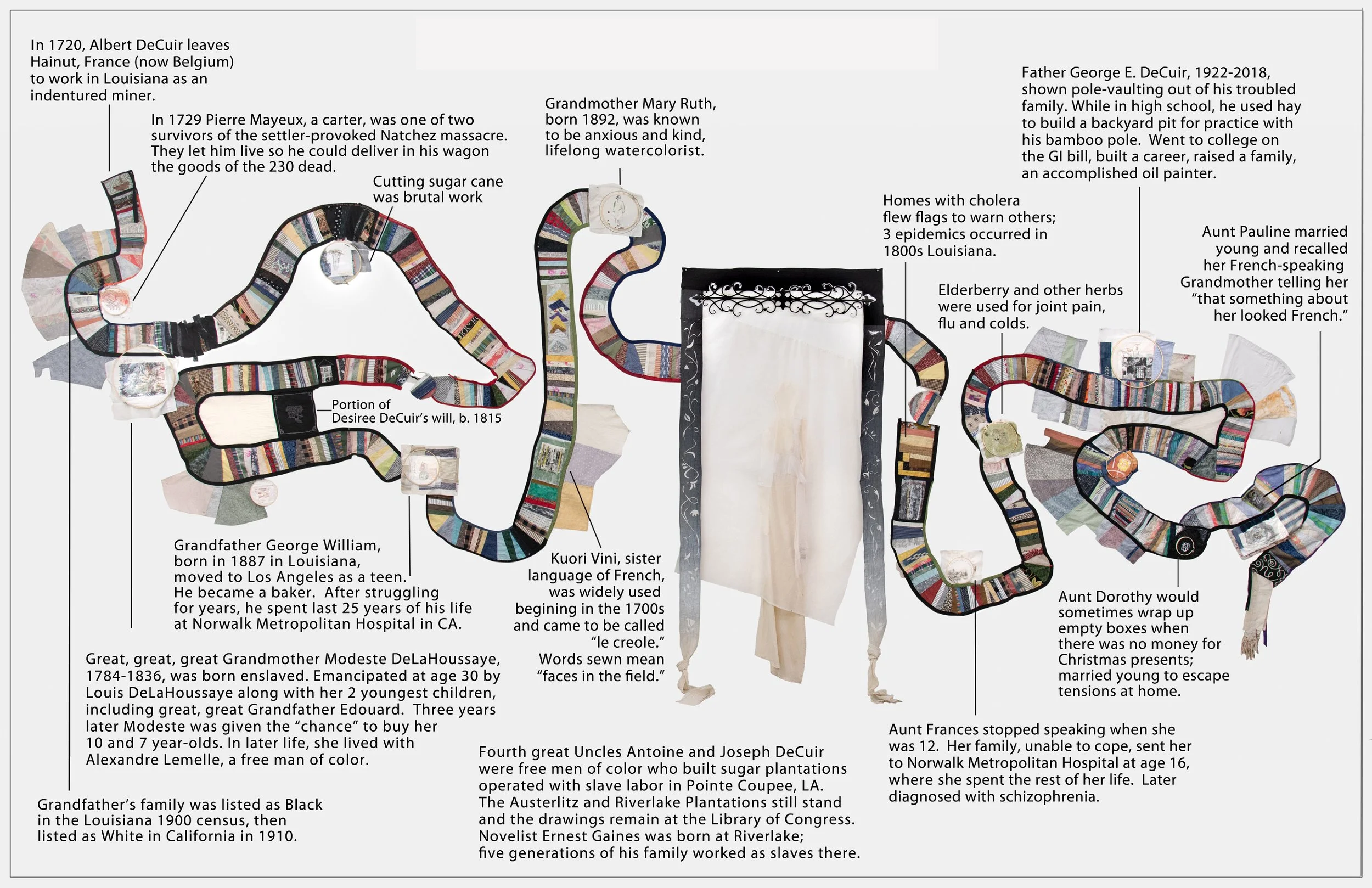The Length of Our Days
This river of cloth winds through 300 years of George DeCuir’s ancestry; he was my father. Near the end of his life, George discovered that some of his Louisiana ancestors came from far beyond France: Mali, Togo, and the Bight of Benin.
The curving form references land tracts lining the Mississippi where George’s ancestors built plantations. The first two generations married into other French immigrant families, but gradually the web of relatives began to include free people of color as well as slaves. Terms such as de couleur libre and mulâtresse esclave start to appear in the records. Textiles include cotton and embroidery dating from the 1800s. Most fabrics are used, some are new.
The remnants are printed on, embroidered, hand-stamped, distressed or dyed. Fragments of the lives of the enslavers and the enslaved are sewn together like connective tissue along with links to others over the years: Bonapartists, Natchez villagers, Black Confederate soldiers, Cajuns, and Creoles. Many particulars are lost to time; mystery is a given with any search spanning this many years. This piece honors the length and breadth of their days.
Tap or click on the red dots to see an enlarged detail. Scroll down to read an extended explanation of this piece.
EXHIBIT
The Length of Our Days and other works in textiles were exhibited at Tom Wudl Studio in October, 2024.


